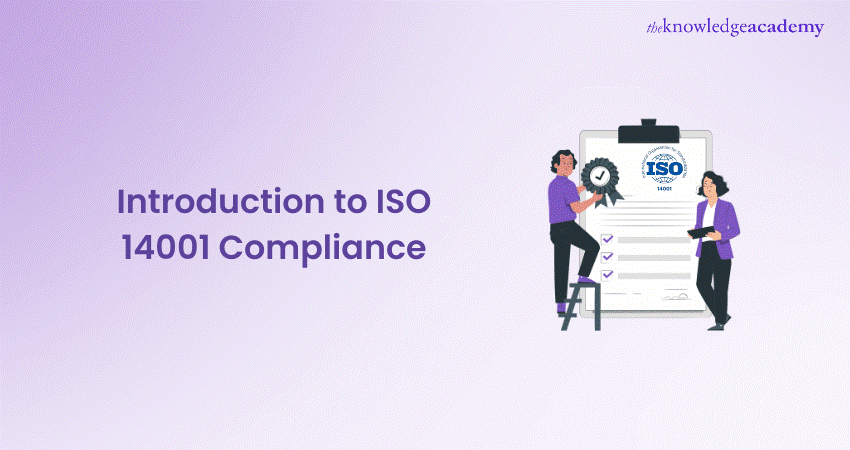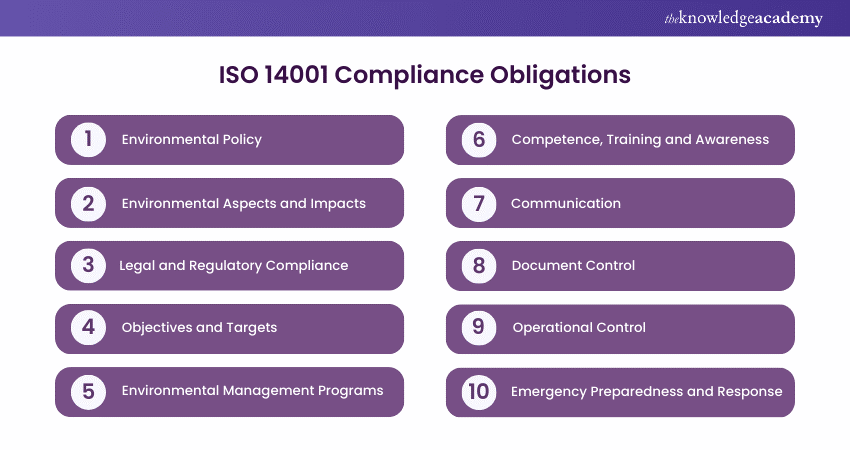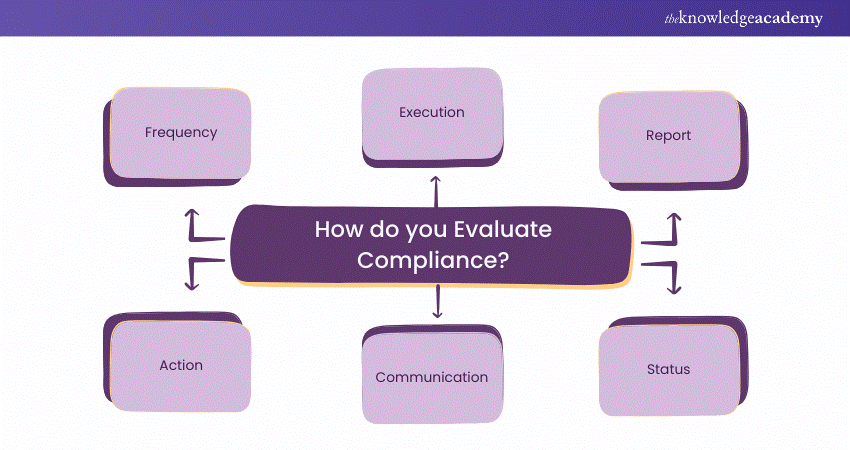We may not have the course you’re looking for. If you enquire or give us a call on + 1-866 272 8822 and speak to our training experts, we may still be able to help with your training requirements.
We ensure quality, budget-alignment, and timely delivery by our expert instructors.

Imagine a business strategy that not only enhances your operational efficiency but also positions you as a leader in environmental responsibility. That’s the power of ISO 14001 Compliance. By embracing this standard, businesses can set clear environmental goals, streamline processes, and achieve significant cost savings. It’s not just about compliance; it’s about building a sustainable future while boosting your reputation and securing a competitive edge.
In this blog, we’ll dive deeper into how ISO 14001 Compliance can transform your organisation. Read on to learn how it helps you meet global standards and drives continuous improvement.
Table of Contents
1) What is ISO 14001 Compliance?
2) What are the ISO 14001 Compliance Obligations?
3) Applicability of Compliance Obligations
4) How do you Evaluate Compliance?
5) Conclusion
What is ISO 14001 Compliance?
ISO 14001 Compliance refers to adhering to the requirements and standards set forth by the International Organisation for Standardization (ISO) in its standard ISO 14001 Software streamlines and manages compliance processes efficiently, encompassing both environmental ISO 14001 Risks and Opportunities.
ISO 14001 helps organisations by providing a framework for developing and implementing effective Environmental Management Systems (EMS). It sets guidelines within the ISO 14001 Life Cycle for identifying and controlling an organisation's environmental impact while ensuring legal compliance and continuous improvement.
What are the ISO 14001 Compliance Obligations?
ISO 14001 addresses both mandatory compliance obligations, such as laws and regulations, and voluntary ones, like contractual agreements, ISO 14001 Audit, and stakeholder expectations. Once an organisation commits to voluntary requirements, they become mandatory.
To implement an Environmental Management System and achieve ISO 14001 Certification, organisations must identify and meet all applicable compliance obligations. This commitment is so crucial that Upper Management formalises it in a public document known as the Environmental Policy.
Organisations start by identifying their compliance obligations and determining the necessary requirements and actions for each. Here are the obligations:

1) Environmental Policy
Organisations must establish and maintain an environmental policy that outlines their commitment to environmental protection, compliance with applicable laws and regulations, and the prevention of pollution. The policy should be documented, communicated to all relevant stakeholders, and reviewed periodically to ensure its continued suitability and effectiveness.
2) Environmental Aspects and Impacts
Organisations are required to identify and assess their Environmental Aspects and Impacts. This involves conducting a comprehensive evaluation of their activities, products, and services to determine their potential effects on the environment. By identifying significant aspects and impacts, organisations can prioritise their efforts towards managing and reducing their environmental footprint.
Structured tools like an Environmental Aspects and Impacts Register for ISO 14001 can also be used to aid in this process.
3) Legal and Regulatory Compliance
ISO 14001 Compliance necessitates organisations to identify and comply with the relevant environmental regulations and other requirements. This includes staying updated with environmental legislation, permits, licenses, and any other obligations imposed by authorities. Organisations must establish procedures to ensure ongoing Compliance and keep records of their adherence to legal requirements.
Become a certified expert in ISO 14001 implementation with ISO 14001 Lead Implementer Course – Join now!
4) Objectives and Targets
Organisations are required to establish measurable environmental objectives and targets based on their identified aspects and impacts. These objectives should align with the organisation's environmental policy and be consistent with its commitment to continual improvement. Organisations can monitor their progress and take action to achieve their environmental goals by setting specific targets.
5) Environmental Management Programs
Organisations must develop and implement Environmental Management programs to achieve their objectives and targets. These programs should outline the actions, responsibilities, resources, and timelines necessary to address the identified aspects and impacts. Organisations can systematically manage and improve their environmental performance by implementing management programs.
6) Competence, Training and Awareness
Organisations must ensure that employees who perform tasks with potentially significant environmental impacts are competent to do so. This involves providing appropriate training, awareness programs, and education on environmental issues, policies, and procedures. By enhancing employee competence and awareness, organisations can foster a culture of environmental responsibility and engagement.
7) Communication
Effective Communication is essential for ISO 14001 Compliance. Organisations should establish internal and external communication processes to facilitate the exchange of relevant environmental information. This includes communicating the organisation's environmental policy, objectives, and performance to employees, Stakeholders, and the public.
Organisations can enhance transparency and engagement in Environmental Management by promoting open communication.
8) Document Control
ISO 14001 requires organisations to establish procedures for Document Control to ensure the effective management and maintenance of Environmental Management System documentation. This includes controlling the creation, review, approval, and distribution of documents and maintaining documented information as evidence of conformity to the standard.
9) Operational Control
Organisations must implement operational controls to manage their significant environmental aspects aligning with the ISO 14001 Context of the Organisation. This involves establishing procedures and work instructions to ensure that activities are carried out in a manner that minimises negative environmental impacts. Operational controls may include measures such as Waste Management, energy conservation, pollution prevention, and sustainable procurement practices.
10) Emergency Preparedness and Response
ISO 14001 Compliance requires organisations to establish and maintain procedures for identifying and responding to environmental emergencies. This includes developing contingency plans, conducting drills and exercises, and ensuring appropriate resources are available to mitigate and respond to environmental incidents.
Drive sustainable change in your organisation with our ISO 14001 Course -Register today!
Applicability of Compliance Obligations
Compliance obligations come in various forms, some of which are consistently applicable, while others are contingent upon specific circumstances. For instance, if an organisation engages in the discharge of industrial wastewater, it is imperative to obtain the necessary license from a competent authority, coupled with adhering to the quality standards stipulated by either general regulations or a specific license.
However, if the organisation does not produce industrial wastewater, these Compliance obligations do not apply. On the other hand, certain compliance obligations hinge on the scale of quantities involved. Take the example of electricity or solvent consumption; in certain countries, surpassing a particular threshold per annum activates a distinct set of requirements and obligations, whereas staying below this threshold means that these obligations remain inapplicable.
This nuanced approach ensures that Compliance obligations are tailored to the organisation's specific activities and the potential impact they may have on the environment or the public. Understanding these nuances is integral to applying the Elements of ISO 14001 effectively.
How do you Evaluate Compliance?
In accordance with ISO 14001:2015, assessment of compliance is done in accordance with the instructions in clause 9.1.2. Here’s how you can evaluate it:

1) Frequency: Frequency should be determined by organisational needs, past performance, and potential environmental consequences of non-compliance.
2) Execution: Carry out assessments for compliance, document findings, and verify that the appropriate team is skilled in applicable laws and tasks.
3) Report: Inform top management of compliance evaluation findings to ensure they are informed about environmental compliance status.
4) Action: Take corrective measures for discrepancies found in assessments, handling them as deviations if needed.
5) Communication: Contact official entities as needed for communication purposes
6) Status: Stay informed about compliance status and organisational circumstances
Conclusion
In conclusion, ISO 14001 Compliance plays a vital role in promoting environmental sustainability and responsible business practices. By successfully implementing ISO 14001 obligations mentioned above, organisations can minimise their environmental impact, enhance their reputation, and gain a competitive edge.
Boost your organisation's Environmental Management with our ISO 14001 Training – register now!
Frequently Asked Questions
What are the ISO 14001 Requirements?

ISO 14001 requires creating an Environmental Management System, setting environmental goals, ensuring regulatory compliance, managing risks, adopting continuous improvement, conducting audits, and involving Senior Management in overseeing and making decisions on environmental performance.
How is ISO 14001 Different From Other Environmental Standards?

ISO 14001 emphasises creating a structured Environmental Management System, focusing on continuous improvement, regulatory compliance, and Risk Management. It offers a flexible framework applicable across various industries, unlike other sector-specific standards.
What are the Other Resources and Offers Provided by The Knowledge Academy?

The Knowledge Academy takes global learning to new heights, offering over 30,000 online courses across 490+ locations in 220 countries. This expansive reach ensures accessibility and convenience for learners worldwide.
Alongside our diverse Online Course Catalogue, encompassing 19 major categories, we go the extra mile by providing a plethora of free educational Online Resources like News updates, Blogs, videos, webinars, and interview questions. Tailoring learning experiences further, professionals can maximise value with customisable Course Bundles of TKA.
What is The Knowledge Pass, and How Does it Work?

The Knowledge Academy’s Knowledge Pass, a prepaid voucher, adds another layer of flexibility, allowing course bookings over a 12-month period. Join us on a journey where education knows no bounds.
What are the Related Courses and Blogs Provided by The Knowledge Academy?

The Knowledge Academy offers various ISO 14001 Certification Courses, including the ISO 14001 Foundation Certification, ISO 14001 Lead Auditor Course, and ISO 14001 Internal Auditor Training. These courses cater to different skill levels, providing comprehensive insights into ISO 14001 Software.
Our Health & Safety Blogs cover a range of topics related to ISO 14001, offering valuable resources, best practices, and industry insights. Whether you are a beginner or looking to advance your Health & Safety skills, The Knowledge Academy's diverse courses and informative blogs have got you covered.
Upcoming Health & Safety Resources Batches & Dates
Date
 ISO 14001 Foundation Certification
ISO 14001 Foundation Certification
Mon 17th Feb 2025
Mon 21st Apr 2025
Mon 23rd Jun 2025
Mon 18th Aug 2025
Mon 20th Oct 2025
Mon 15th Dec 2025






 Top Rated Course
Top Rated Course



 If you wish to make any changes to your course, please
If you wish to make any changes to your course, please


